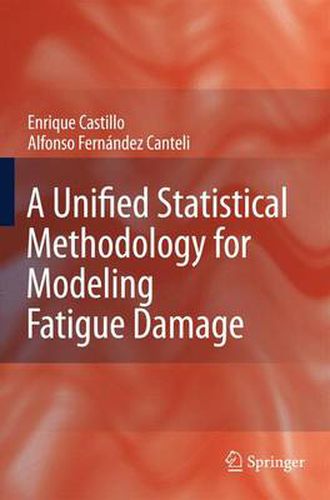Readings Newsletter
Become a Readings Member to make your shopping experience even easier.
Sign in or sign up for free!
You’re not far away from qualifying for FREE standard shipping within Australia
You’ve qualified for FREE standard shipping within Australia
The cart is loading…






This title is printed to order. This book may have been self-published. If so, we cannot guarantee the quality of the content. In the main most books will have gone through the editing process however some may not. We therefore suggest that you be aware of this before ordering this book. If in doubt check either the author or publisher’s details as we are unable to accept any returns unless they are faulty. Please contact us if you have any questions.
This book is an attempt to provide a uni?ed methodology to derive models for fatigue life. This includes S-N, ?-N and crack propagation models. This is not a conventional book aimed at describing the fatigue fundamentals, but rather a book in which the basic models of the three main fatigue approaches, the stress-based, the strain-based and the fracture mechanics approaches, are contemplated from a novel and integrated point of view. On the other hand, as an alternative to the preferential attention paid to deterministic models based on the physical, phenomenological and empirical description of fatigue, their probabilistic nature is emphasized in this book, in which stochastic fatigue and crack growth models are presented. This book is the result of a long period of close collaborationbetween its two authors who, although of di?erent backgrounds, mathematical and mechanical, both have a strong sense of engineering with respect to the fatigue problem. When the authors of this book ?rst approached the fatigue ?eld in 1982 (twenty six years ago), they found the following scenario: 1. Linear, bilinear or trilinear models were frequently proposed by relevant laboratoriesandacademiccenterstoreproducetheW ohler?eld. Thiswas the case of well known institutions, which justi?ed these models based on clientrequirementsorpreferences. Thisledtotheinclusionofsuchmodels and methods as, for example, the up-and-down, in standards and o?cial practical directives (ASTM, Euronorm, etc.), which have proved to be unfortunate.
$9.00 standard shipping within Australia
FREE standard shipping within Australia for orders over $100.00
Express & International shipping calculated at checkout
This title is printed to order. This book may have been self-published. If so, we cannot guarantee the quality of the content. In the main most books will have gone through the editing process however some may not. We therefore suggest that you be aware of this before ordering this book. If in doubt check either the author or publisher’s details as we are unable to accept any returns unless they are faulty. Please contact us if you have any questions.
This book is an attempt to provide a uni?ed methodology to derive models for fatigue life. This includes S-N, ?-N and crack propagation models. This is not a conventional book aimed at describing the fatigue fundamentals, but rather a book in which the basic models of the three main fatigue approaches, the stress-based, the strain-based and the fracture mechanics approaches, are contemplated from a novel and integrated point of view. On the other hand, as an alternative to the preferential attention paid to deterministic models based on the physical, phenomenological and empirical description of fatigue, their probabilistic nature is emphasized in this book, in which stochastic fatigue and crack growth models are presented. This book is the result of a long period of close collaborationbetween its two authors who, although of di?erent backgrounds, mathematical and mechanical, both have a strong sense of engineering with respect to the fatigue problem. When the authors of this book ?rst approached the fatigue ?eld in 1982 (twenty six years ago), they found the following scenario: 1. Linear, bilinear or trilinear models were frequently proposed by relevant laboratoriesandacademiccenterstoreproducetheW ohler?eld. Thiswas the case of well known institutions, which justi?ed these models based on clientrequirementsorpreferences. Thisledtotheinclusionofsuchmodels and methods as, for example, the up-and-down, in standards and o?cial practical directives (ASTM, Euronorm, etc.), which have proved to be unfortunate.